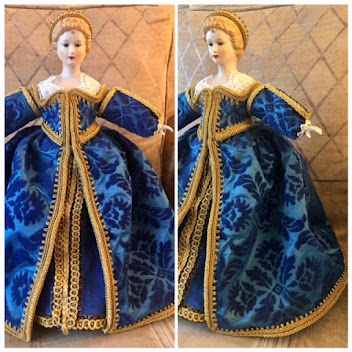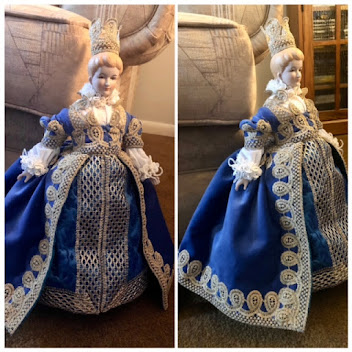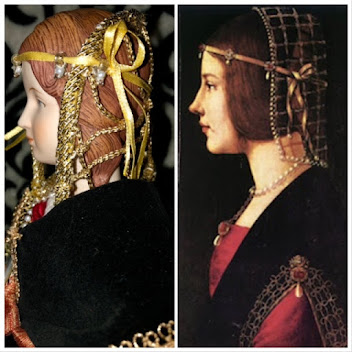It's a fact that always puzzled me, that there is a massive sum of information just lost to history. There was so much that people knew about trades, techniques, supplies, and so much more about the medieval and ancient world, that was not passed on. Since much of the information was passed through verbal means, many details were lost. It wasn't till much later in the 16th century, trade manuals became popular means to pass information, although not all information was written down. Certain trade secrets or methods were left out to protect the guild or merchant from trouble with their colleagues. Many of these trade manuals continued to be popular and excellent sources of information into the 18th and 19th centuries, although incomplete.
When I am discussing this topic of lost information, here is an example from a sewing techniques series of books. So when reading the previously mentioned sewing manual, it says to sew something in the usual way. An assumed amount of knowledge was common for those in the trade to know immediately. The instruction of the "usual way" is puzzling. Which stitch were they using, what was considered usual for that time, and why was this assumption even given in the manual at all? If it was common knowledge at the time, why bring it up? It raised many more questions than answered for me, as you can clearly see. Although this is a good example of my original statement of lost knowledge to the annals of history.
Some of the details are ancillary information that could further the understanding of a particular trade, technique, or various objects. Other pieces of information could be more key to figuring out a significant breakthrough in understanding from an earlier time in civilization. Occasionally we recover some lost information by traditional archeology, and newer versions of experimental archeology, or by other means of discovery via research.
The main means of lost knowledge is advancements in technology in our modern world. Obseletism has its challenges, although prior methods are better recorded in our time than in the past. We can look at books and relearn food preparation techniques from the 1930s, the means that someone made clothing from the era, repaired a home from the Great Depression, how the family would grow food, and made needed objects for domestic use from sourced supplies. There is little loss to time, some but the further back one researches the wider the gap becomes.
 This gap is where we as historical reenactors, historical recreationists, amateur historians try to fill in by experimental archeology. Which is creating theory and conjecture on how certain tasks, items were made, careers were worked, and how everyday things were accomplished with the tools and materials from the time. The tricky part is that due to lost trade or common knowledge, the hopes of historical accuracy can feel but a pipe dream. Many a historical clothier or other various old world trade reenactor tries to show their trade as it was done in the time. It's a glimpse into a particular past, although technically historically incomplete.
This gap is where we as historical reenactors, historical recreationists, amateur historians try to fill in by experimental archeology. Which is creating theory and conjecture on how certain tasks, items were made, careers were worked, and how everyday things were accomplished with the tools and materials from the time. The tricky part is that due to lost trade or common knowledge, the hopes of historical accuracy can feel but a pipe dream. Many a historical clothier or other various old world trade reenactor tries to show their trade as it was done in the time. It's a glimpse into a particular past, although technically historically incomplete.
In conclusion, true historical accuracy is a near-impossible task to achieve. As amateur historians, historical reenactors, or historical recreationists have a responsibility to portray an accurate version of history. Within the rules and confines of a group or particular organization and to the best knowledge of the individual. All the while taking into consideration modern tastes, sensibilities that have occurred after the portrayed period of time depicted by the event. Although someone has taken time to learn something from the past, it's just a sliver of the truth, since we are not a person who actually lived during the depicted time. Ever endeavor to gain knowledge as discovered and researched, we should task ourselves to do our best even if not historically complete. History offers many interesting insights to learn from, even in our modern world.
Things to think about for my own interpretations in 2022 for Tudor clothing,
Marrin







No comments:
Post a Comment